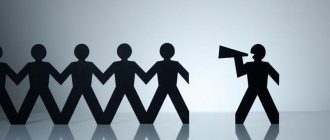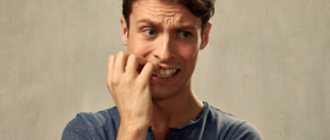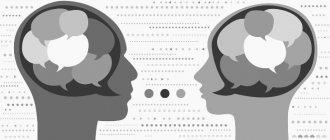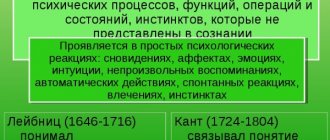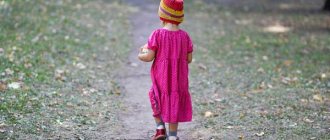Homo sapiens, or homo sapiens, is the most intelligent creature among mammals. Its origin is still being studied by experts today. If you look at the research results, you can see that animals and people are connected by some common characteristics that serve as proof of the theory of the emergence of an intelligent species.
Scientists classify humans as Chordata. For many decades, experts have tried to clarify their assumptions and substantiate the theory. Today it is beyond doubt.
Man's place in the animal world
Not everyone knows which kingdom a person belongs to. According to modern scientific classification, people belong to the Animal kingdom. Belonging to this kingdom has been proven by numerous studies of the first representatives of the genus.
What class does it belong to?
Humans belong to the phylum Chordata, class Mammals, order Primates, family Hominidae and genus Humans. It is the only representative of the species. The expanded classification indicates membership in the subtype Vertebrates.
Features of the external and internal structure, lifestyle, and nuances of reproduction are studied in a school biology course. There are other sciences that study human beings: psychology, sociology, cultural studies, genealogy.
Evidence of belonging to the animal world
To confirm the theory of human origins, experts provide a number of evidence.
The main ones will be the following:
- belonging to the order Primates is proven by the presence of five-fingered limbs and nails on the fingertips;
- the thumb is opposed to the rest;
- there is a collarbone;
- about 90% of human genes are identical to primate genes;
- at an early stage of development, the intestine, neural tube and notochord are formed;
- The human spine is internal, has several sections, the vertebrae are movably connected to each other;
- the coccygeal vertebrae are vestigial, since representatives of the species do not have a tail, like many mammals;
- warm-bloodedness, closed circles of blood circulation;
- four-chambered heart;
- presence of a diaphragm;
- internal fertilization, feeding the child with milk;
- development of unconditioned and conditioned reflexes.
Another proof is the presence of other rudiments in people, for example, wisdom teeth, an appendix, and undeveloped muscles capable of controlling the ears. In total, experts count about 100 rudimentary organs.
Theories of origin and evolution of the species
Scientists discovered the presence of chordate characteristics in the human structure not so long ago. Long before this, various theories of the origin of the species were put forward. Darwin's theory is considered the most popular. According to the naturalist, the closest relative of modern humans is the chimpanzee.
Studying the DNA of animals and humans confirmed the assumptions. The second most popular theory is the religious one, according to which all people descended from Adam and Eve. The ancestors lived many years before our era and laid the foundation for the entire family.
Some scientists claim that fish are close relatives of humans, others insist on the alien theory, according to which life on Earth arose after aliens arrived on it.
None of the theories today has absolute proof of its veracity. Even Charles Darwin wrote more than once in his works that his assumption was hypothetical.
Human evolution includes several stages:
- Southern monkeys, or australopithecines, are upright walking individuals that resemble modern humans in appearance. They are descendants of Dryopithecus, who lived about 4 million years ago.
- Homo habilis, the progenitor of ancient people, resembled anthropoid apes in appearance.
- Homo erectus lived in East Africa about 1.6 million years ago.
- Neanderthal - the ancestor of modern man, appeared 200 thousand years ago, disappeared 30,000 years ago.
- Homo sapiens appeared about 100-160 thousand years ago, was distinguished by the ability to use complex tools, built a home, and began to develop culture.
The exact date of appearance of the species is unknown, but an approximate date was established based on Darwin's theory.
First modern humans
Appeared 90–40 thousand years ago. Cro-Magnons had a height of up to 180 cm, a high straight forehead, and a developed chin protuberance. The brain volume reached 1600 cm3. The Cro-Magnons lived in tribal communities, sewed clothes from skins, built homes, tamed animals, cultivated the land, and painted on the walls of caves ( Fig. 7 ).
Rice. 7. Rock painting
More developed speech, the manufacture of tools, the emergence of religion and culture are the distinctive features of modern people.
Structure
In the external and internal structure of the representatives of the genus, characteristic features can be identified that allow them to be classified in the kingdom Animalia, the class Mammals.
External
The appearance of individuals differs from other representatives of the class.
Characteristic appearance features:
- The head is large, well mobile due to the muscles of the neck. Eyes vary in size, which depends on race. Supraorbital ridges are absent.
- The nose of individuals has different shapes, sizes and lengths. The mouth is framed by lips, the thickness of which varies.
- The auricles of representatives of the Chordata type are rounded and do not have hair.
- The head is covered with hair that frames the face. The number, density, thickness, color and strength of hairs differ among different representatives.
- The upper and lower limbs are five-fingered, with a nail plate at the tips. The arms are long, reaching the middle of the thighs. Legs can be long or short. The fingers on the upper extremities are longer, and those on the lower extremities are shorter.
- The average height of a man is 175 cm, a woman - 165 cm. Weight differs depending on eating habits and individual characteristics.
- The skin is soft, elastic, covered with hairs in some areas. In adults, hair growth is observed in the genital area, armpits, arms and legs, especially in men. The latter also have large amounts of hair on their face.
- Sexual dimorphism is pronounced. Women have a wide pelvis, narrow shoulders, men have wide shoulders and a narrow pelvis. The external genitalia are represented in men by the penis and testicles, in women by folds of skin called the labia and mammary glands.
Within the species, several groups (races) are distinguished, representatives of each differ in appearance. Some traits are characteristic only of individuals of a certain race.
Internal
The internal structure of representatives of the Hominid family is somewhat different from individuals of the class. Organs and tissues have structural features and unusual locations.
Main features of the internal structure:
- The oral cavity contains the tongue, teeth, the larynx contains the vocal cords and tonsils.
- The throat smoothly passes into the trachea and esophagus, located parallel to each other. The trachea is wide, long, and passes into the bronchi. The esophagus is made up of an inner mucous layer and muscles that help it contract to move food along.
- Below the larynx in front of the trachea is the thyroid gland, which performs important functions.
- The bronchi have a complex structure and pass into the lungs. The right lung is slightly larger than the left.
- The heart is four-chambered, has two atria and two ventricles, separated by septa. The muscular organ is located in the heart sac or pericardium. Venous and arterial blood in the chambers do not mix due to the presence of valves that prevent regurgitation.
- The circulatory system is developed, consisting of large veins, arteries and small capillaries. People have two circles of blood circulation: large and small. The first allows blood to move throughout the body, delivering oxygen and nutrients to tissues and organs. The second is called pulmonary, it plays an important role in gas exchange.
- The digestive system consists of the oral cavity, esophagus, stomach, small and large intestines, duodenum, liver, pancreas, gall bladder, and rectum.
- The excretory organs are represented by the kidneys, from which the ureters emerge and go into the bladder. Processed food exits through the anus, which ends at the rectum. At the top of each kidney there are paired glands - adrenal glands, which produce hormones important for the body.
- The male internal genital organs are represented by the testes and prostate gland. A woman has a uterus, ovaries, fallopian tubes, and vagina.
- The skull is large and consists of paired bones that are immovably connected to each other. The upper and lower jaws are movably attached to the skull.
- The spine of representatives of the Hominid family consists of 33-34 vertebrae, divided into 5 sections: cervical, thoracic, lumbar, sacral, coccygeal. Between the vertebrae there are discs made of cartilage tissue.
- The organs of the chest are protected by the sternum and ribs. The bones of the limbs are connected by a joint capsule, which contains fluid to lubricate the cartilage and normal functioning of the joint.
- The nervous system is very developed. The brain is large and occupies the entire internal area of the cranium. It consists of several sections: middle, oblongata, pineal gland, cerebellum, pituitary gland, cerebral hemispheres. The brain contains gray and white matter, has a cortex, and has a large number of convolutions on top.
- In the area where the skull connects with the cervical spine, the brain becomes the spinal cord. It has sensory and motor roots, is located inside the spinal canal and is well protected from damage by the vertebrae.
The spinal column and limb bones make up the skeleton of an individual. Upright walking is possible precisely due to the peculiarities of its structure. The sense organs are represented by paired eyes, ears, sinuses, and tongue. The sense of touch is achieved through the sensitive skin.
Sensory typology
Another popular classification is sensory typology, which has become widely known largely thanks to neurolinguistic programming (NLP), in which work with clients is largely based on this typology.
This classification of psychotypes is also based on the characteristics of the perception of information by different people. There are 3 main channels for receiving information and processing sensory experience: visual (visual images), auditory (sounds) and kinesthetic, associated with the sphere of tactile and motor sensations.
Each person usually has one dominant channel for receiving information. This doesn’t mean that others don’t work, it’s just that we trust one type of sensation more. For some, these are visual images, because “seeing once is better than hearing a hundred times.” For others, sound design is more important; he perceives information better by ear and often believes words more than his eyes. And the third one generally needs to check everything “by touch”; for him, what is important is not appearance or rumors, but a feeling of comfort. These three types can be distinguished even without resorting to complex psychological tests, just listen to what words they use in conversation:
- Visual type. These are people for whom information appears in the form of colorful pictures. When communicating, they try to describe in detail all the details associated with the visual image, gesticulate a lot and often use the following words and phrases: “It seems to me”, “Look how it looks”, “What an interesting solution has emerged”, “Let’s take a closer look” . These people are pleased by everything beautiful, harmonious and are annoyed by the disorder on the table or in the apartment, for example, scattered things. When communicating with people, they pay great attention to appearance and clothing.
- Auditory type. The meaning of sounds for them is so great that in conversation they constantly monitor their intonation, their speech is very expressive. They often use words related to hearing and sounds: “I listened to you carefully,” “This is in tune with my thoughts,” “Listen to me,” “The bell rang.” Loud, sharp sounds irritate auditory people, and they can be fascinated, for example, by the timbre of their partner’s voice.
- Kinesthetic type. People related to it pay a lot of attention to sensory sensations. They love things that are comfortable, and crumbs in the bed can drive them crazy. In their speech, kinesthetics often use words associated with sensations, movement, movement: “I feel what you want to convey to me,” “You managed to convey this to me,” “It will be difficult to explain,” etc.
Features of the leading sensory or, as they also say, representative system influence the behavior, nature of people’s activities, their preferences and communication. Often, conflicts between partners arise precisely because of the mismatch of their sensory systems. The visual is annoyed by things lying around in disarray, and his auditor partner becomes furious when he hears the visual singing out of tune in the shower. And the kinesthetic husband, who loves comfort, cannot understand his visual wife, who is indignant at the fact that he smokes in a chair in the room, shaking the ashes on the carpet.
These are not all examples of psychotypes. But from the typologies presented here it is already clear that it is almost impossible to cover all the diversity of manifestations of individuality and “pack” them into one classification. But even partial knowledge of the characteristics of one type or another helps to build relationships with others and develop one’s own behavioral strategies.
Life cycle
The biological species leads a special way of life, different from other representatives of the class Mammals.
Breath
The organs of the respiratory system play an important role in gas exchange. The process begins in the nasal cavity, the air masses warm up, enter the trachea and bronchi, and then into the lungs. From there, oxygen molecules are transported through the bloodstream to all organs and tissues.
The reverse flow of blood carries carbon dioxide molecules that are expelled. Red blood cells, or erythrocytes, carry oxygen in the body. With their deficiency, oxygen starvation of organs occurs.
Nutrition
Representatives of the genus Humans are omnivorous mammals. They eat plant and animal foods. The second one must be thermally treated before use.
Teeth and tongue are important parts of the digestion process. The first helps to grind the products, the second helps to push them into the esophagus. After entering the stomach, active production of hydrochloric acid begins, bile comes from the gallbladder, and the pancreas produces enzymes for digesting food. Afterwards, food enters the small intestine, then into the large intestine.
After final processing and absorption of nutrients, the products are excreted in the feces. The normal functioning of the digestive system largely depends on the composition of the diet and the predominance of certain products in it. People eat many mammals, mollusks, and birds.
Reproduction
Individuals from the family Hominidae are dioecious and are characterized by viviparity. Puberty occurs at the age of 15-18 years. The ability to conceive depends on a woman's menstrual cycle, which lasts on average 28 days. During pregnancy, a woman is sexually active, which is not typical for other mammals.
Reproductive function in women lasts up to 40-50 years, after which menopause occurs. Men are usually able to conceive even in old age.
Fertilization is internal, the growth of the fetus occurs in the woman's uterus. After 40 weeks of intrauterine development, a fully formed baby is born. For several months, he feeds on mother's milk, which ensures the supply of necessary substances and strong immunity. The birth of more than 1 baby occurs approximately once in 80-90 births.
No baby mammal requires as much attention and care as a human baby. Both parents usually take part in raising the child.
Lifespan
The average life expectancy of individuals in developed countries exceeds 70 years. In others, this figure is 65-69 years.
In most cases, the indicator depends on dietary habits, professional activities and hereditary predisposition.
Types of higher nervous activity according to I. P. Pavlov
Russian psychophysiologist I.P. Pavlov confirmed the correctness of Hippocrates' classification, but he, of course, did not believe that the types were associated with fluid in the body. The difference in temperaments or types of higher nervous activity, from Pavlov’s point of view, depends on the strength, nature and speed of the basic nervous processes - excitation and inhibition. The psychophysiologist also identified 4 types, whose characteristics are very close to the temperaments of Hippocrates:
- Strong, fast - sanguine.
- Strong, inert – phlegmatic.
- Strong, unrestrained - choleric.
- The weak type is melancholic.
It was the study of the characteristics of higher nervous activity of different types made by I. P. Pavlov that made it possible to identify such characteristics of individuals as extraversion and introversion, emotional stability and lability, rigidity and plasticity, etc. Combinations of these characteristics formed the basis of many modern classifications, including one of the most popular – the classification of psychosociotypes.
Difference from animals
Characteristics of the lifestyle, structural features and other nuances distinguish individuals of the genus from other animals.
Consciousness and mind
The mind of a representative of the Human race is capable of systematic analysis. Individuals are self-aware; already at the age of 18 months they can recognize themselves in the mirror. In addition, there is the subconscious, which has been studied by specialists for several decades.
It is not difficult for the human brain to learn, but only a small part of the organ functions throughout life. The intelligence of individuals is considered the most striking difference from other representatives of the class.
Emotions and feelings
Emotions are an important difference between humans and other animals. They represent a complex psychological process that develops as a result of the influence of external factors. Individuals experience a lot of positive and negative emotions every day.
Feelings are also characteristic only of representatives of the Human race. Love, hatred, affection, passion, hostility expresses the subjective attitude of individuals towards a particular person or event. Such manifestations are not typical for other mammals.
Dreams
Individuals of the Hominid family are characterized by a diurnal lifestyle. At night they rest and dream. They can be colorful or black and white.
After waking up, a person often remembers the scene he saw, which is also unique to this species. Dreams are the result of the work of the subconscious.
Lifestyle
The lifestyle of representatives of the Chordata type depends on their individual characteristics and preferences.
There are several differences in the life of individuals from other mammals:
- People have a positive attitude towards art, many of them are endowed with talents. A significant part is engaged in singing, dancing, painting, and playing musical instruments.
- The vast majority of people believe in the existence of higher powers and are adherents of some religion. Today in the world a significant part of the population is Christian. There are also Muslims, Buddhists and representatives of other religious denominations.
- Work is another difference between people and other individuals in the kingdom. A person chooses a profession depending on his own preferences.
- Almost every person has a hobby. For some it is music, books, travel, sports.
- The friendship of individuals with each other distinguishes them from other animals.
The individual leads a solitary lifestyle or finds a partner and creates a family.
Human races, their genetic relatedness
In the process of biological evolution, the most stable groups of people have emerged within the same species and subspecies of H. sapiens sapiens. These are races that are characterized by certain genotypes and phenotypes. Representatives of the same race are characterized by common hereditary characteristics - skin color, eye shape, eyelid structure, hair structure and color ( Table 1 ).
Table 1.
Modern races of people
| Asian-American (Mongoloid) | Eurasian (Caucasoid) | Equatorial (Australian-Negroid) |
| Signs | ||
|
|
|
The reason for the formation of races in the distant past was settlement across continents. Subsequent geographic isolation consolidated adaptive traits. Morphophysiological differences acquired during the process of biological evolution are not evidence of different degrees of organization. All races and peoples are at the same stage of evolution. Crossbreeding produces fertile offspring. Claims of racial superiority have no scientific explanation.
Nationalities and nations should be distinguished from races. Ethnic groups were formed as a result of social processes.
Impact on the environment
The place of man in the system of the organic world and his role in the existence of the planet is great. Individuals are beneficial, but sometimes harm other inhabitants of the Earth.
Benefit
Many processes in the world occur due to the activities of representatives of the Hominid family.
The main benefits are as follows:
- develops new territories;
- studies flora and fauna;
- studies animal behavior;
- invents means for treating fauna;
- breeds new species of plants and animals;
- helps preserve some endangered species;
- regulates the number of mammals.
Thanks to human activity, almost the entire territory of the planet has been developed today.
Harm
An increase in the number of individuals negatively affects the ecology of the Earth.
The main harm is as follows:
- pollutes large areas with waste;
- industrial enterprises worsen the environment, pollute the seas, oceans and atmosphere;
- cuts down trees in large numbers;
- extracts many minerals, depleting reserves;
- the number of animals of commercial importance is constantly decreasing, which can gradually lead to extinction;
- population growth gradually reduces the amount of drinking water and food per individual.
Every year people destroy many animals, deteriorate the existence of many species, which negatively affects the environment.
The problem of overpopulation of the earth
The problem of overpopulation today is acute in some countries of the world (Japan, China). In other regions the situation is more stable. Scientists give pessimistic and optimistic forecasts.
Pessimists argue that with the rapid growth of the population, natural resources will not be enough to ensure hygienic living standards. Optimists are confident that with a competent approach and saving resources, it is possible to stabilize the situation and avoid a crisis.
Psychotypes according to Freud
Sigmund Freud founded the first school of human psychology. Firmly convinced that childhood is the basis for the development of personality, he emphasized the study of children, highlighting the types of psychotypes. The scientist believed that the experiences and stress received by the child would leave a mark on the psyche and result in problems with health and behavior.
He divided childhood into several stages, the definitions of which are formed from the influence of various organs and sexual zones. According to Sigmund Freud, a child is born with a certain amount of psychosexual energy, which subsequently goes through all stages. The development of libido is formed into 4 human psychotypes. He called the first three pregenital (oral, anal, phallic - from 0 to 5 years), and the fourth - genital (puberty).

